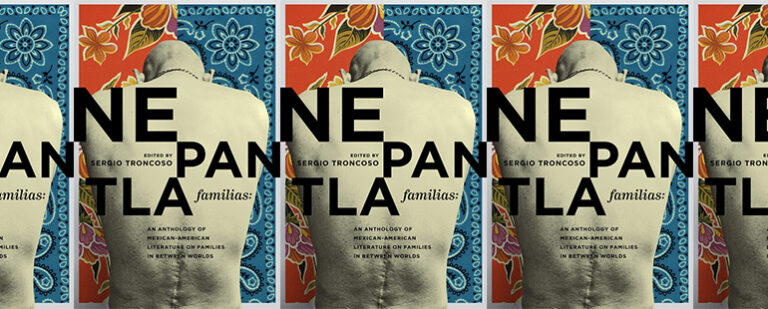The Myth of the Perfect Translation
I first came across Murakami Haruki’s work when I picked up The Wind-Up Bird Chronicle in English a number of years ago. I wasn’t familiar with his earlier work, but, as there was not as much of a market for contemporary Japanese writers translated into English back then, I was excited simply to see a living Japanese author on the shelf of my local Midwestern bookstore. Since then, Murakami has become a pillar of Japanese-literature-in-translation, and his work garners increasing reader devotion with each subsequent book. As someone who studied Japanese literature for a bit, I inevitably ended up talking to other readers about Murakami’s work, often coming up against one particular question: how accurate are the English translations?
In his new book Who We’re Reading When We’re Reading Murakami, David Karashima, himself a writer and translator, lays bare the invisible structures that support the international career of someone like Murakami: the multiple translators, editors, and publicists that take his work and create it into the product that Western readers then consume. Some readers approaching Karashima’s book hoping for insight into Murakami himself might be disappointed at the moments where he seems to linger too long on the back-and-forth, nitty-gritty background work of translating and editing Murakami’s books, but herein lies its brilliance: Karashima forces Western readers to reckon with long unquestioned myths about how translation works. As the title of the book makes clear, we are reading Murakami when we’re reading about Alfred Birnbaum, Elmer Luke, Jay Rubin, and the other key figures Karashima brings to light as those who have made his Western success possible. And while Karashima’s book focuses on Murakami’s body of work specifically, it also highlights larger questions of how Western readers approach translated works.
In many of the conversations I had with Murakami fans in the past, there seemed to be an unconscious belief that the translator was simply a machine plugging in a one-to-one, literal translation, from one language to another. This is not the case, and the desire for a literal or “accurate” translation belies an anxiety that the reader is possibly missing out on something—that they aren’t getting direct access to their beloved author if they read a book in translation. As Karashima points out, there are a number of factors that determine how much of the Japanese original ends up in the English translation, and how much cultural specificity may be cut out. Such changes are, at times, made for practical reasons—allusions to specific moments in history may be omitted if they are potentially confusing or if the allusions now feel out of date, as the gap between original publication and publication of the translation could span a number of years. Likewise, the use of repetition is effective in Japanese, but less so in English, so translators and editors may choose to cut out repetitive material (with the author’s consent) to improve the flow of the text as a whole, making the text shorter in English than it is in Japanese. Karashima’s book, however, highlights another key determiner when it comes to translation decisions: publishing houses. Karashima recounts the famous translation and editing process of The Wind-Up Bird Chronicle, originally written in three volumes and abridged in the English version. Karashima writes, “At approximately 290,000 words, [Jay Rubin’s translation] was far longer than the 125,00 words initially proposed in a draft contract with the publisher.” The book subsequently lost three chapters to stay within the allotted word count and came out to wide critical acclaim in 1997.
I asked Morgan Giles, the translator of Miri Yu’s Tokyo Ueno Station (longlisted for the 2020 National Book Awards for Translated Literature), about her approach to translating texts that juggle multiple cultural elements. Far from the cultural flattening Karashima tracks in some early translations of Murakami’s work, Giles’ approach is one of inviting readers to do their own research and explore cultural elements that may not be immediately clear. Giles says, “I might explain subtly that Pocari Sweat is a soft drink in the translation, but everyone’s got Google now.” Creating a space for readers to situate themselves in worlds they may not be familiar with seems to be key to Giles’ approach. She explained that the book she is currently working on, The End of August, another by Miri Yu, “blends Japanese and Korean languages and cultures in the text, and that’s key to its structure and intent. It was meant to be linguistically and culturally challenging for most of its readers. If I lose that in translation, I’ve lost the book itself.” While Giles believes that we wouldn’t see a similar level of editing now as happened with The Wind-Up Bird Chronicle, she also notes that a form of gatekeeping still remains around the length of works in translation. Unlike Murakami’s hefty tomes, which in the 1990s needed to be cut down, Giles notes that publishers are now often less interested in shorter books, which are more common in Japan due to differences in publishing formats.
What does it mean for a translation to be accurate, then, if publishing houses can decide to chop up or rearrange material from Japanese-to-English or even bypass work that they believe doesn’t fit the market? The Wind-Up Bird Chronicle is an extreme case, making it easy to feel that
“tampering” with an original text is never justified. But such a stance overlooks the artistry that goes into translation, particularly when language itself is so deeply linked with culture and lived experience. As readers, it can be easy to forget how the words on the page transmit more than literal meaning—more importantly, language transmits affect. Ginny Tapley Takemori, the translator of multiple texts, including Murata Sayaka’s acclaimed Convenience Store Woman, offered me a few examples from her own translation practice. She points to a 炬燵 (kotatsu), a low, wooden table with a quilt or a futon over it with a heat source below. Kotatsu not only don’t exist in English-speaking countries, but the word itself comes with a whole host of affective markers. In Takemori’s words, it often serves as “an image of cozy family harmony, like sitting in the kotatsu with your granny while eating mikan oranges.” The act of translating a scene with a kotatsu is more than simply getting the image of the literal object across to readers.
Another common example in Japanese is the use of 僕 (boku), meaning “I” but specific to a male or masculine voice, different from 私 (watashi), used by both men and women, but considered a more feminine word. The feeling carried by each version of “I” therefore differs. To illustrate, Takemori described another work of Murata’s she translated, a short story called “Culture Shock” written for a performance at the Manchester Arts Festival in 2019. Takemori explained that the first word of the piece is boku, “indicating a male voice, likely a boy, which I felt was extremely significant as Murata usually writes from a female perspective.” In Japanese, the establishing voice is clear from the beginning—but how to get this across to readers in English in a way that feels organic? Takemori’s solution is a genius one, playing off another word that appeared later in the story when an old woman uses the word, 可哀想 (kawaisō), which is generally translated as poor thing or pitiable. Initially, Takemori says she thought to translate it as You poor thing, but instead translated it as You poor boy, thereby clarifying the gender of the speaker without awkwardly disrupting the flow of the narrative. As Takemori said, “it’s not the first word, but at least it’s in there.”
Who We’re Reading When We’re Reading Murakami brings to light the forces that made Murakami the powerhouse of Japanese literature that he is today, but it also showcases the influence that translators, editors, and publishers have on the final product, thereby breaking apart the myth of access to the “real” voice of the author. While the original author is key to the success of a story, the translator is just as worthy of acclaim, and their initial interest in a work can be the first step in an author’s international popularity. While there has been an increase in Japanese-to-English translations, particularly regarding the work of women writers, Karashima’s book also helps readers understand the market forces propelling this increase. What books are picked up by publishers and why? By revealing this element of the translation industrial complex to a larger readership, my hope is that Karashima’s readers will also seek out the books that translators like Giles and Takemori are working on, texts that cannot easily shrug off their cultural specifics or texts that force readers to do the extra work. We can read Murakami, and we can enjoy him, but we can also find others to read now, too.


